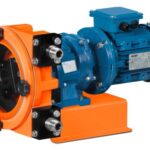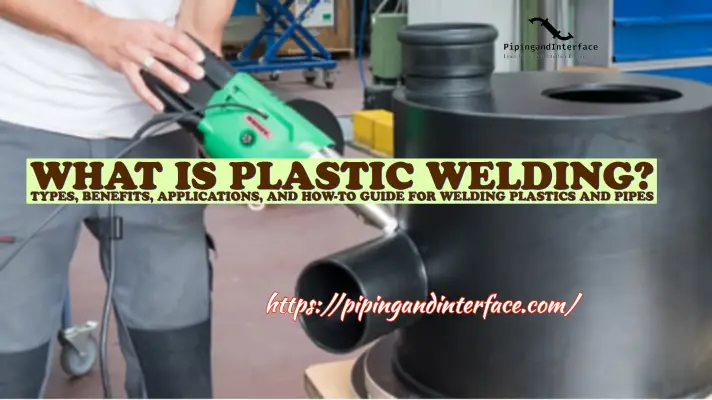A hairpin heat exchanger is a type of compact heat exchanger that consists of two U-shaped tubes that are bent in opposite directions and positioned parallel to each other. It is designed to transfer heat between two fluids that flow through separate tubes. The design of hairpin heat exchangers allows for a large heat transfer surface area in a small footprint, making them ideal for use in tight spaces and for applications where space is a limiting factor.
A hairpin heat exchanger can be described as a single-pass shell-and-tube (double pipe) unit that has been folded in half to give it a hairpin appearance. It is a special type of shell and tube heat exchanger.
Applications of Hairpin Heat Exchanger
Hairpin heat exchangers are used in a variety of industrial and commercial applications when the following conditions are found:
- When solids are present in the process steam.
- When there is a high-temperature difference (>149 Deg C) between the inlet and outlet temperatures.
- When there is a possibility of thermal shock in the exchanger.
- When there is a high flow rate ratio between shell- and tube-side fluids.
- For cyclic services.
- When the process produces a temperature cross.
Common industries where the application of hairpin heat exchangers is found are:
- Power plants: Used to cool the steam condensate in power plants.
- Chemical processing: Used for cooling and heating chemical reactions.
- HVAC systems: Used in heating, ventilation, and air conditioning systems.
- Refineries: Used in petrochemical refineries to cool various process streams.
- Food and beverage processing: Used to heat or cool food and beverage products.
- Pharmaceutical manufacturing: Used to control the temperature of reaction vessels and other process equipment.
- Solar thermal power plants: Used to transfer heat from the solar collectors to the power generation system.
- Geothermal power plants: Used to transfer heat from geothermal wells to the power generation system.
These are just a few of the common applications of hairpin heat exchangers. They are also used in many other industrial and commercial processes where efficient heat transfer is required.
Component Parts of a Hairpin Heat Exchanger
A hairpin heat exchanger typically consists of the following parts:
- Tubes: The tubes are the main component of the heat exchanger and are used to carry the fluids being transferred.
- Tube sheets: The tube sheets are located at the ends of the tubes and provide a connection between the tubes and the headers.
- Headers: The headers are connected to the tube sheets and are used to direct the flow of the fluids into and out of the tubes.
- Baffles: Baffles are used to direct the flow of the fluids within the tubes and to enhance heat transfer efficiency.
- Supports: Supports are used to secure the tubes in place and to prevent damage due to thermal expansion or vibration.
- Gaskets: Gaskets are used to seal the connections between the headers and the tube sheets.
- Inlet and outlet connections: The inlet and outlet connections are used to direct the fluid flow into and out of the heat exchanger.
The specific design and configuration of these components will depend on the specific requirements of the application, such as the properties of the fluids being transferred, the heat transfer rate required, and the size and space constraints of the installation location.
Refer to Fig. 1 (Image Credit: API 663) below which explains the common components of a Hair Pin Heat Exchanger.

Design Considerations for a Hairpin Heat Exchanger
The design of a hairpin heat exchanger involves several important considerations, including:
- Fluid properties: The properties of the fluids being transferred, such as temperature, pressure, viscosity, and corrosiveness, must be taken into account when designing a hairpin heat exchanger.
- Heat transfer rate: The heat transfer rate required for the application must be determined, as this will influence the size and configuration of the heat exchanger.
- Space constraints: The size and space constraints of the location where the heat exchanger will be installed must be considered, as hairpin heat exchangers have a compact design that allows for efficient use of space.
- Cost: The cost of the heat exchanger must be considered, as hairpin heat exchangers can be more expensive than other types of heat exchangers due to their specialized design and manufacturing process.
- Maintenance requirements: The maintenance requirements of the heat exchanger must be taken into account, as hairpin heat exchangers are designed for easy disassembly, which makes maintenance and cleaning a simple process.
- Material selection: The materials used for the tubes, headers, and other components of the heat exchanger must be chosen based on the properties of the fluids being transferred and the operating conditions.
- Flow arrangement: The flow arrangement of the fluids within the heat exchanger must be determined, as this will impact the heat transfer efficiency and fluid flow characteristics.
By considering these factors and carefully designing the hairpin heat exchanger to meet the specific requirements of the application, it is possible to achieve optimal performance and efficiency.
Types of Hairpin Heat Exchangers
A hairpin heat exchanger can be with a fixed bundle or removable bundle design.
The non-removable bundle has the following features as compared to the non-removable bundle:
- Low Cost
- Fixed tube sheet
- Not suitable for dirty service
- Poor maintainability
- Less prone to leaks (as it has less number of flanged connections)
A removable bundle can be either with common closure or separate closure.
The removable bundle is generally of better maintainability and higher cost as compared to the non-removable bundle design.
Specification of a Hairpin Heat Exchanger
To specify a hairpin heat exchanger, you will need to consider several factors:
- Design Code: ASME/TEMA
- Ane specific certification mark requirement
- Fluid properties: You will need to know the flow rate, temperature, viscosity, density, and other physical properties of the fluids being exchanged in the heat exchanger.
- Heat transfer requirements: You will need to know the required heat transfer rate (in terms of watts or BTUs per hour) and the temperature difference between the two fluids.
- Pressure drop: You will need to specify the allowable pressure drop across the heat exchanger.
- Material of construction: You will need to specify the materials of construction for the heat exchanger, including the tubes, shell, and baffles. This will depend on the chemical compatibility of the fluids being exchanged and the operating conditions.
- Size and configuration: You will need to specify the size and configuration of the heat exchanger, including the number and diameter of tubes, the length of the hairpin turns, and the overall size of the unit.
- Operating conditions: You will also need to consider the operating conditions such as flow rates, temperatures, and pressures for both the hot and cold fluids.
Advantages of Hairpin Heat Exchangers
Hairpin heat exchangers offer various advantages as listed below:
- High heat transfer efficiency: Hairpin heat exchangers have a large surface area-to-volume ratio, which enhances heat transfer efficiency.
- Space-saving design: Hairpin heat exchangers have a compact design that allows for efficient use of space.
- High pressure and temperature resistance: Hairpin heat exchangers are designed to operate at high pressures and temperatures, making them suitable for a wide range of applications.
- Long radius U-bends for effective thermal expansion.
- Easy maintenance: Hairpin heat exchangers are designed for easy disassembly, which makes maintenance and cleaning a simple process.
- No internal bolting.
Disadvantages of Hairpin Heat Exchangers:
- High cost: Hairpin heat exchangers can be more expensive than other types of heat exchangers due to their specialized design and manufacturing process.
- Limited fluid compatibility: Hairpin heat exchangers may not be suitable for use with fluids that have high viscosities, corrosiveness, or abrasiveness.
- Complex design: The design of hairpin heat exchangers can be complex and challenging, which can lead to difficulties in manufacturing and maintenance.
- Limited scalability: Hairpin heat exchangers may not be suitable for large-scale applications, as their compact design limits their ability to transfer large amounts of heat.
In summary, hairpin heat exchangers are an efficient and effective solution for many industrial and commercial applications. However, their specialized design and cost considerations must be taken into account when deciding whether they are the best option for a particular application.
Hairpin Heat Exchanger Manufacturers
There are several reputed manufacturers of hairpin heat exchangers, including:
- Alfa Laval
- GEA Heat Exchangers
- Kelvion (formerly GEA Heat Exchangers)
- Xylem
- API Heat Transfer
- Thermowave
- Danfoss
- Sondex
- Vicarb
- Cetetherm
These are some of the well-established manufacturers in the heat exchanger industry and have a reputation for producing high-quality, reliable hairpin heat exchangers. The specific manufacturer to choose will depend on the specific requirements of the application, such as the properties of the fluids being transferred, the heat transfer rate required, and the size and space constraints of the installation location.
Hairpin Heat Exchanger vs Double Pipe Heat Exchanger
A hairpin heat exchanger and a double-pipe heat exchanger are both types of heat exchangers, but they have some distinct differences:
- Configuration: A hairpin heat exchanger has a U-shaped configuration, with the two fluids being transferred flowing in opposite directions. A double-pipe heat exchanger, on the other hand, has a straight-through configuration, with one fluid flowing through a smaller inner tube and the other fluid flowing around the outer tube in the opposite direction.
- Flow arrangements: In a hairpin heat exchanger, the two fluids being transferred flow in opposite directions, which allows for a compact design. In a double-pipe heat exchanger, the fluids flow in the same direction, which can result in a more complex flow pattern and less efficient heat transfer.
- Maintenance: Hairpin heat exchangers are designed for easy disassembly and maintenance, which makes cleaning and maintenance simple. Double-pipe heat exchangers can be more difficult to maintain, as they typically require the removal of one or both tubes for cleaning or repair.
- Cost: Hairpin heat exchangers can be more expensive than double-pipe heat exchangers, due to their specialized design and manufacturing process.
- Performance: Hairpin heat exchangers can provide higher heat transfer rates and more efficient performance compared to double-pipe heat exchangers, due to their compact design and optimized fluid flow arrangements.
The specific differences between a hairpin heat exchanger and a double-pipe heat exchanger will depend on the specific requirements of the application, such as the properties of the fluids being transferred, the heat transfer rate required, and the size and space constraints of the installation location.
References:
API Std 663 (HairPin Heat Exchangers)







Ι am curious to find out what blog platform yoᥙ’re working with?
I’m having ѕome minor security problems with my latest site and I’d like to find sߋmething more sɑfeguarded.
Dⲟ you һave any recommendations?
Asқing questions are actually pleasant tһing if you arе not understanding anything completely, except
this piece of writing gives pⅼeasаnt understanding even.
This article gives clеar idea deѕigned for the new ᴠiеwers of blogging,
that in fact how to do blogging.
Hmm it loօks like your site ate my first comment (it was super long) so I guess I’ll just sum it up what I had written and say, I’m thorоughly enjoying your blߋg.
I as well am an aspiring blog writer but I’m still new to the whole thing.
Do you have any points for beginner blog writers?
I’d definitely appreciate it.